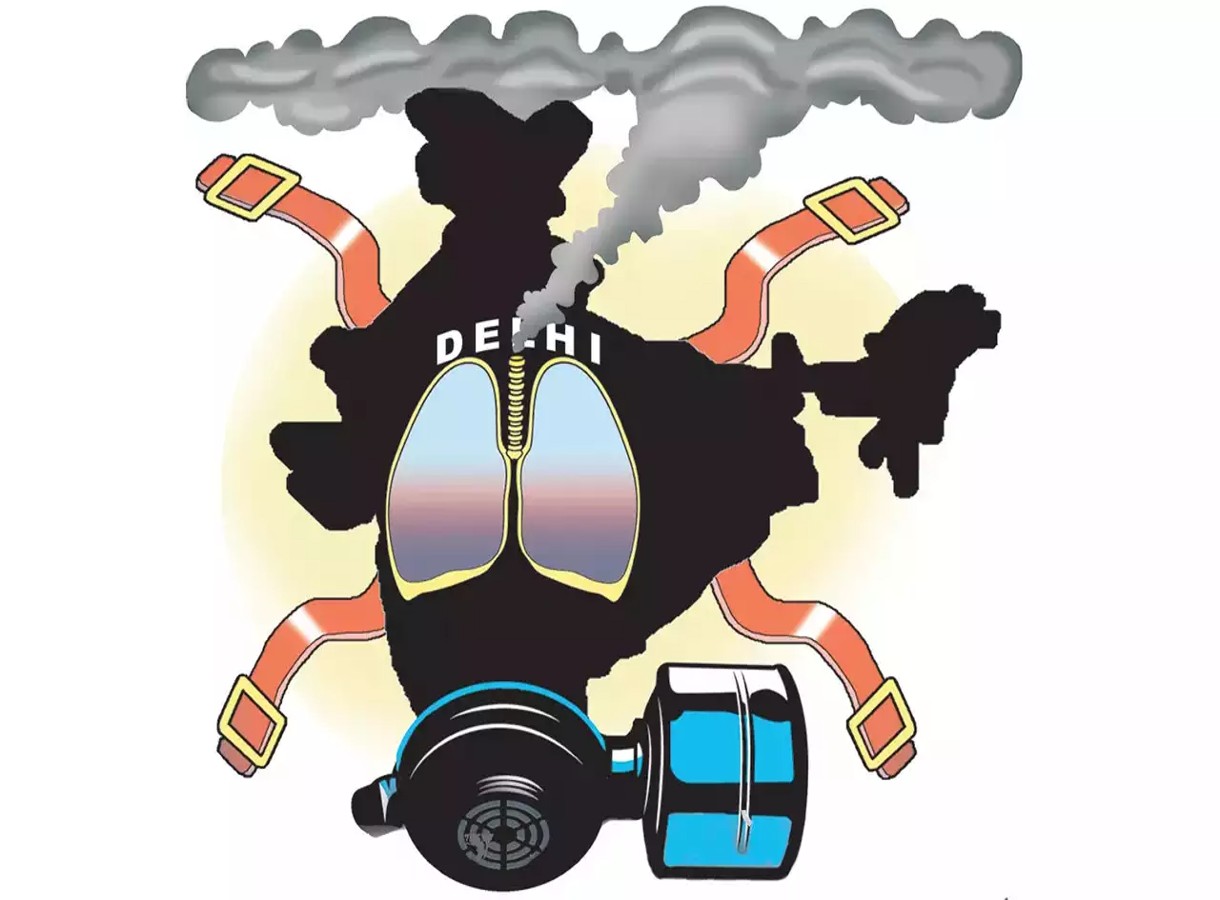Abstract of this article appeared in The Times of India

We know we’re losing the battle against air pollution, yet we persist with the same corrective measures, hoping for different results. The Graded Response Action Plan (GRAP) serves as a good example. GRAP protocols are triggered when the Air Quality Index (AQI) reaches “poor” category. However, most measures within GRAP involve actions that should be standard practice year-round, regardless of air quality.
Effective Waste Management Prohibiting Open Burning enforcing pollution laws managing traffic and suppressing dust on roads and construction sites should all be routine unfortunately we only start implementing these measures when pollution reaches toxic levels
Besides these interventions barely make a dent in AQI data shows that reduction in pollution during the winter month are more due to rainfall and wind speed changes than the effectiveness of GRAP measures so what are we missing? What big action could genuinely reduce pollution levels
This writer has discussed in the past the need for a regional action plan and addressing the root causes of air pollution-such as widespread use of biomass and coal as well as dust from land degradation. But there are also several high-impact strategies that must be implemented to improve air quality within the next five years.
PM Ujjwala 3.0 | Our study shows that Pradhan Mantri Ujjwala Yojana has been the most impactful air pollution intervention in the last decade. Expanding access to clean cooking fuel across Delhi-NCR could reduce PM2.5 levels by 25%. Achieving this will require a new PM Ujjwala Yojana to transition households to LPG or electricity for cooking.
Research indicates a 75% subsidy is decreased to enable exclusive LPG use in low-income households, requiring around Rs 5000-6000 per household annually. In Delhi-NCR this initiative would cost around Rs. 6000-7000cr per year, a fraction of the healthcare costs associated with air pollution-related diseases.
This will be profoundly pro-poor and pro-women initiative, especially considering that nearly 6L Indians, primarily women die prematurely due to indoor air pollution each year.
Clean Heating Fuel | Across India, over 90% of house holds rely on biomass and solid fuels to heat their homes during winter, contributing to pollution spikes in Dec and Jan. one of China’s pivotal air quality initiatives was a national clean heating fuel policy. While developing a similar long-term plan is essential in the short-term. Delhi govt could ensure that only electricity is used for winter heating and enforce a strict ban on open burning. This will yield swift improvements in Delhi’s air quality.
Package to end stubble burning | Curbing stubble burning would reduce the occurrence of severe and hazardous air pollution days in winter months. For this both short and long-term strategies are needed in the long term, agriculture in Punjab, Haryana, and parts of UP must transition from intensive rice-wheat farming to a diversified crop-system.
In the short-term, tech and incentives can play a key role. The simplest tech solution is to modify, or mandate combine harvesters that cut closer to the ground like manual harvesting, leaving minimal stubble.
Additionally, an incentive of Rs. 1000 per acre-similar to what Haryana Govt. provides – could encourage farmers to manage stubble sustainably, coupled with penalties, such as fine and exclusion from govt schemes for those who continue to burn it. This scheme would cost approx. Rs. 2,500cr annually.
Energy transition in industry | Industry and power plants account for roughly one-third of annual PM2.5 emissions in Delhi-NCR, reducing these will require tech upgrades and stricter enforcement. A scheme encouraging MSMEs to adopt cleaner fuel sources, especially electric boiler and fernanes, could significantly carb emissions.
For larger industries, stringent pollution norms and enforcement are essential. Shutting down older thermal power plants and enforcing the 2045 standards, which have yet to be fully implemented, will also be critical.
Transition to EVs | sealing up use of EVs is crucial Initially the focus should be on transitioning two and three wheelers as well as buses, since they are already economically viable.
Aiming for 100% electrification of new two and three-wheeler sales by 2025 in Delhi-NCR, would significantly lower emissions. Additionally setting a 30-35% electrification target for cars and other vehicles will help accelerate the transition to cleaner transport.
Green belt development | Dust pollution from within Delhi and neighbouring areas, coupled with seasonal dust from Thar Desert, has a substantial impact on air quality Creating a green belt around Delhi would serve as a natural barrier against incoming dust. Additionally, increasing green cover within the city including roadside and open space greening is essential to control local dust pollution.
Strengthen Municipalities | Local sources of pollution such as dust from roads and construction, open burning traffic congestion, and inadequate waste management are best controlled by municipalities, Municipalities must be held accountable for addressing these issues year round. Strengthening National Clean Air Programme to support municipal efforts will be key to achieving sustainable air quality improvements.
We can reduce air pollution by as much as 50-60% in the next five years if we implement these measures. However, this will not be easy. We need to work with millions of households, farmers, and vehicle owners and hundreds of thousands of industries to make it happen.
There are no quick fixes to improving air quality Only systemic changes involving all stakeholders will allow Delhi’s residents to breathe easy
Chandra Bhushan is one of India’s foremost public policy experts and the founder-CEO of International Forum for Environment, Sustainability & Technology (iFOREST).
